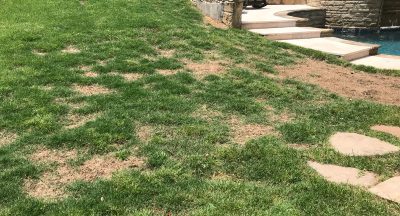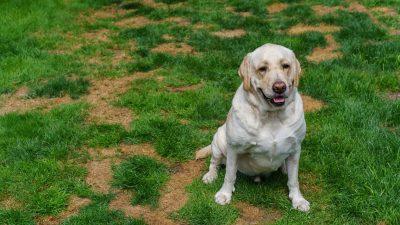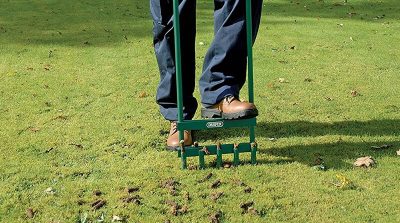Pets On Your Lawn!
As a pet owner, you love your furry companions and want them to enjoy your lawn just as much as you do. However, it's no secret that pets can have a significant impact on the health and appearance of your lawn. From brown spots caused by pet urine to digging and chewing on plants, pets can create a lot of damage if left unchecked.
The good news is that there are steps you can take to minimize the impact of pets on your lawn and keep it looking healthy and beautiful. In this blog, we'll explore the effects of pets on your lawn and provide you with practical tips on how to manage it. Whether you're a dog owner, a cat lover, or have other pets, we'll show you how to maintain a beautiful lawn while still enjoying the company of your furry friends.
The Effects Of Pet Urine And Feces

When pets urinate on your lawn, the high nitrogen content in their urine can cause the grass to burn and turn brown. This is especially true for female dogs, who tend to release a larger volume of urine in a single spot. Over time, these brown spots can spread and make your lawn look unsightly. Pet feces can also have a negative impact on your lawn. In addition to being unsightly, pet waste can contain harmful bacteria and parasites that can spread to your lawn and make it unsafe for humans and pets alike. Furthermore, pet waste can attract flies and other pests that can damage your lawn.
By understanding the effects of pet urine and feces on your lawn and taking steps to manage it, you can maintain a beautiful lawn while still enjoying the company of your pets.
Training Your Pets

Here are some simple tips and tricks you can do to help potty train your dog. Be sure to try all of them to see which works best for your dogs happiness and our lawns appearence.
- Take your dog for regular walks: One of the most effective ways to prevent your dog from peeing or pooing on your lawn is to take them for regular walks. This will provide them with the opportunity to relieve themselves in appropriate locations, such as designated dog parks or green spaces.
- Designate a specific area for your dog to go: Another option is to create a designated area in your yard for your dog to go potty. This can be a specific patch of grass or a designated potty area covered in gravel or mulch. Train your dog to use this area consistently by leading them to it each time they need to go.
- Use positive reinforcement: When your dog goes potty in the appropriate location, be sure to praise them and offer a reward, such as a treat or a favorite toy. This positive reinforcement can help encourage them to continue using the designated area.
- Provide frequent bathroom breaks: If you’re unable to take your dog for regular walks, be sure to provide them with frequent bathroom breaks throughout the day. This can help prevent accidents on your lawn.
- Consider using deterrents: There are a variety of deterrents available on the market, such as sprays or ultrasonic devices, that can help prevent your dog from going potty in unwanted areas. However, it’s important to note that these deterrents may not work for all dogs.
Minimizing The Damage
To minimize the impact of pet urine and feces on your lawn, it's important to clean up after your pets regularly. Solid waste should be picked up using a scooper or a plastic bag and disposed of properly. If your pets urinate on your lawn, dilute the area with water immediately to help flush the nitrogen out of the soil. Another option is to train your pets to use a designated area for their waste. This can be a separate part of your yard, a litter box for cats, or a designated spot for dogs. By training your pets to use a specific area, you can minimize the impact of their waste on your lawn and keep it looking healthy and green.
Maintaining Grass
When it comes to maintaining a healthy lawn in the face of animal urine and foot traffic, choosing the right grass type is key. Bermuda grass and Zoysia grass are both excellent choices for lawns with heavy foot traffic from pets. These warm-season grasses are known for their durability and ability to withstand wear and tear. They also have a natural resistance to pests and disease, which can be beneficial for lawns with animal feces.
It's important to note that even with the right grass type, pet urine can still cause damage to the lawn. To minimize the effects of urine on the grass, be sure to water the lawn regularly to dilute the urine and promote healthy growth. You can also train your pets to use a designated area for potty breaks, or take them for regular walks to reduce the amount of time they spend on the lawn. Additionally, aerating and fertilizing the lawn can help improve its overall health and resilience to pet traffic.

Summarise
Pets can have a significant impact on the health and appearance of your lawn. Animal feces and urine can cause damage to the grass, while heavy foot traffic can lead to wear and tear. Choosing the right grass type, such as Bermuda or Zoysia, can help mitigate the effects of pet traffic. Additionally, good lawn care practices like regular watering, fertilization, and aeration can help maintain the lawn's health and resilience. By being mindful of your pets' impact on the lawn and taking steps to minimize damage, you can enjoy a beautiful and healthy lawn for years to come